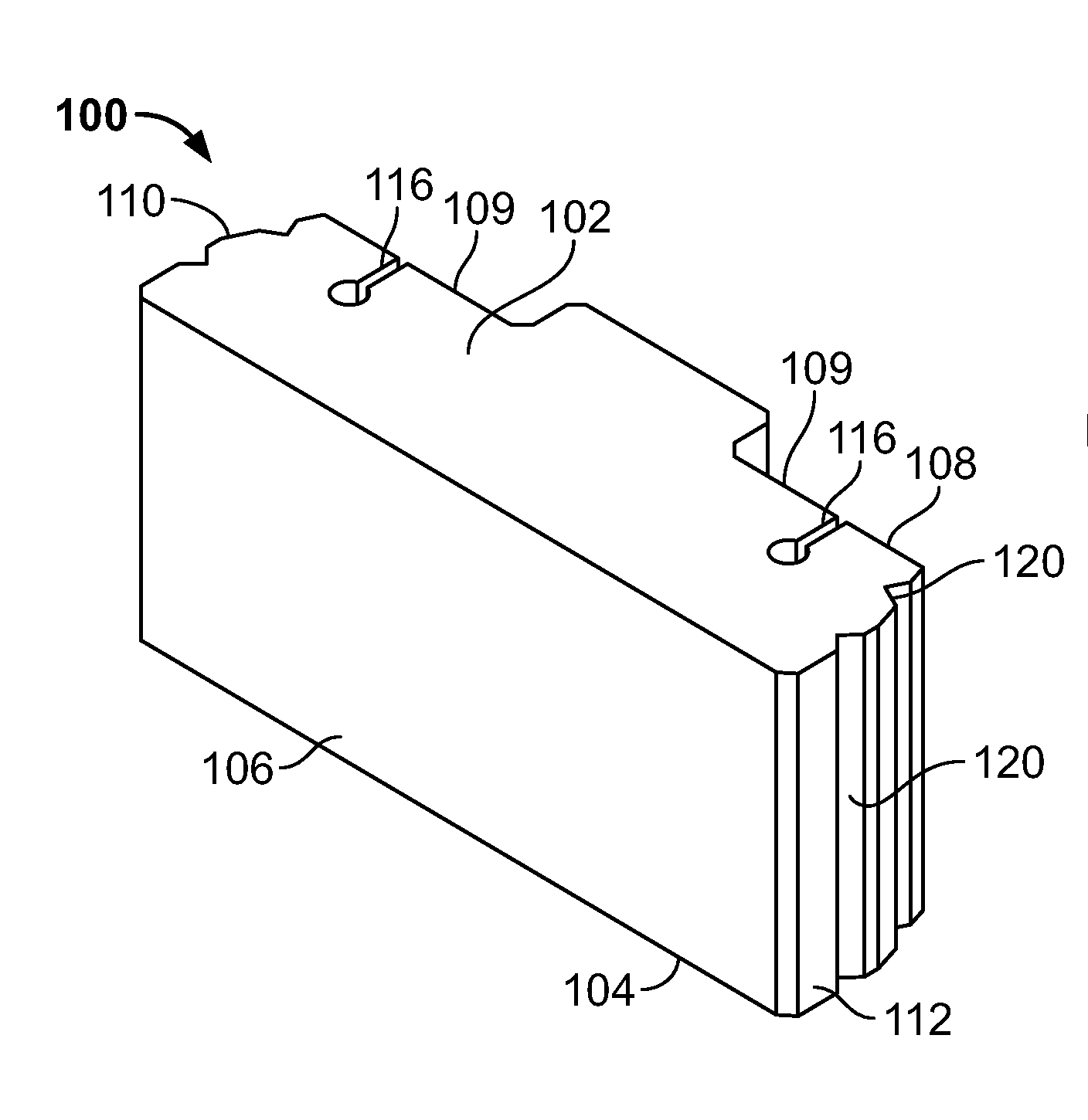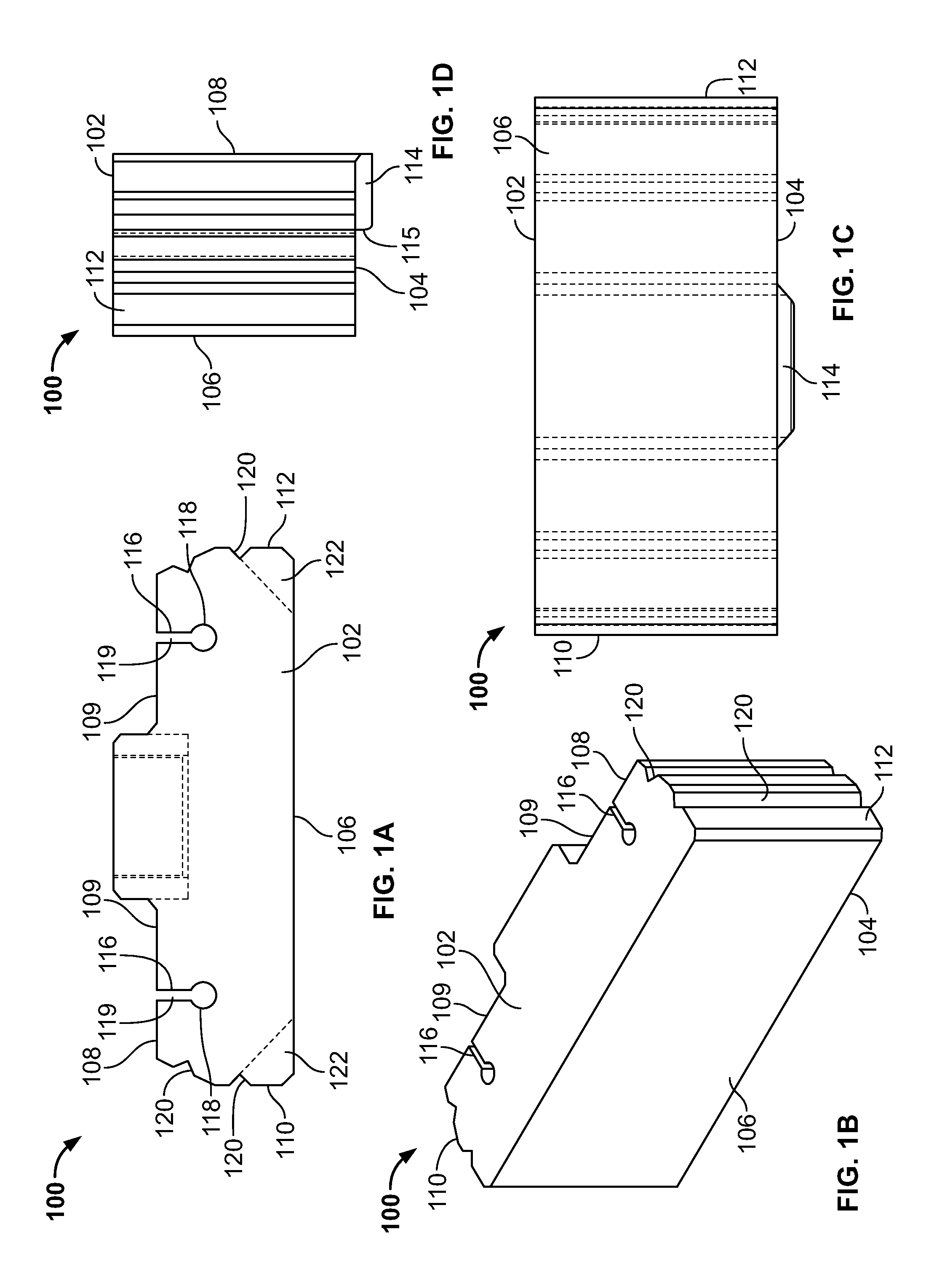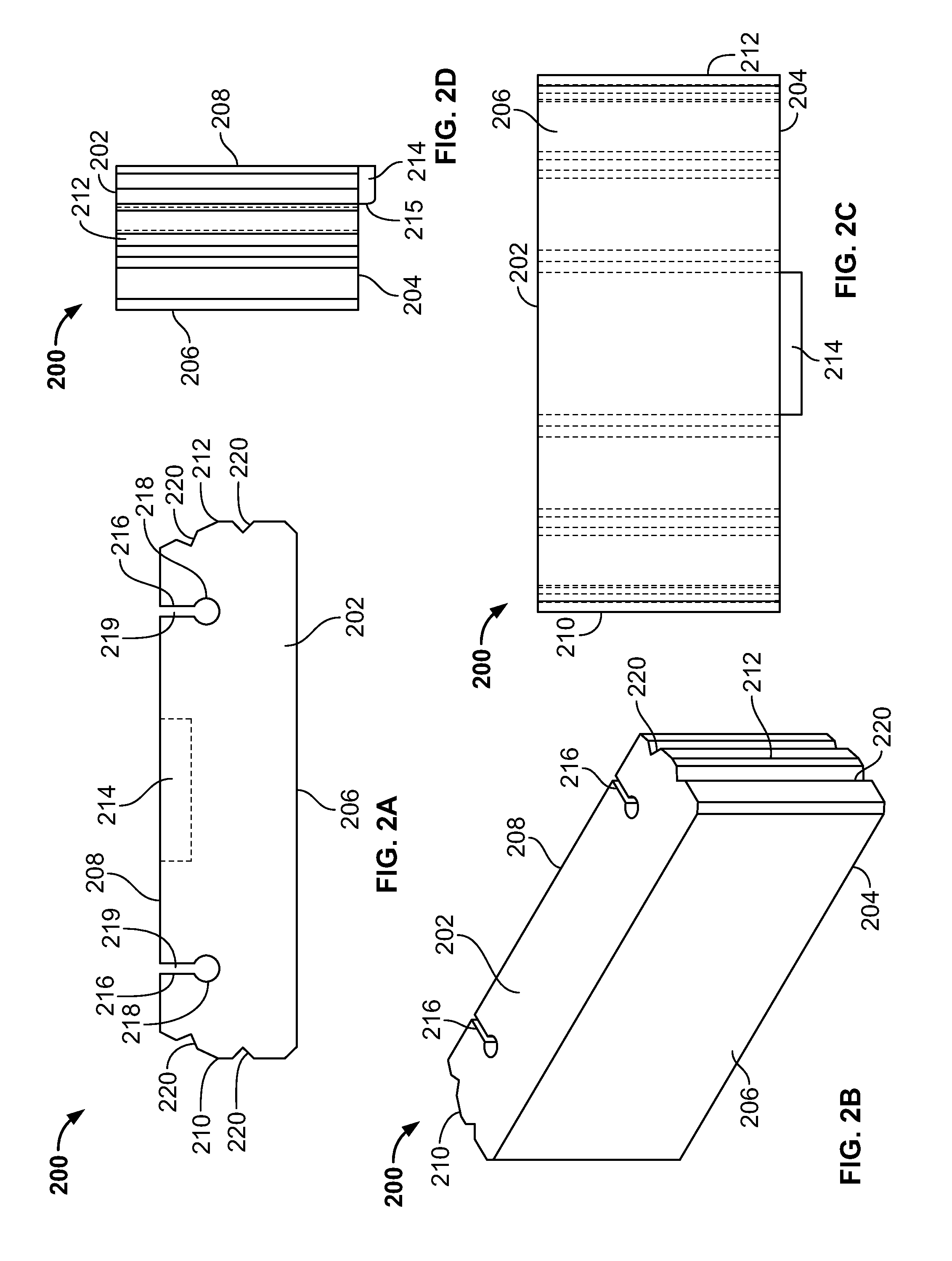Wall Block With Barrier Member
- Summary
- Abstract
- Description
- Claims
- Application Information
AI Technical Summary
Benefits of technology
Problems solved by technology
Method used
Image
Examples
Embodiment Construction
[0037]The use of wall blocks with attached barrier members enables wall systems to be constructed with decreased cost and labor. Walls having the same or more strength and stability as walls built with large retaining wall blocks can be built with much smaller wall blocks used with barrier members because blocks and barrier members function as a single unit and the banded region created by attaching barrier members to wall blocks provides a large amount of space that can be backfilled with crushed rock, dirt, or the like. Construction of such walls is much less labor intensive because of the reduced block size and weight and because barrier members are easily engaged with blocks. Substantial cost savings results because less concrete mixture is needed to form each block. Moreover, labor costs of building a wall with such blocks are reduced, more blocks can be shipped on a truck of the same size, and more blocks can be produced in the same size mold.
[0038]Referring to FIGS. 1A-1D, th...
PUM
 Login to View More
Login to View More Abstract
Description
Claims
Application Information
 Login to View More
Login to View More - R&D
- Intellectual Property
- Life Sciences
- Materials
- Tech Scout
- Unparalleled Data Quality
- Higher Quality Content
- 60% Fewer Hallucinations
Browse by: Latest US Patents, China's latest patents, Technical Efficacy Thesaurus, Application Domain, Technology Topic, Popular Technical Reports.
© 2025 PatSnap. All rights reserved.Legal|Privacy policy|Modern Slavery Act Transparency Statement|Sitemap|About US| Contact US: help@patsnap.com



